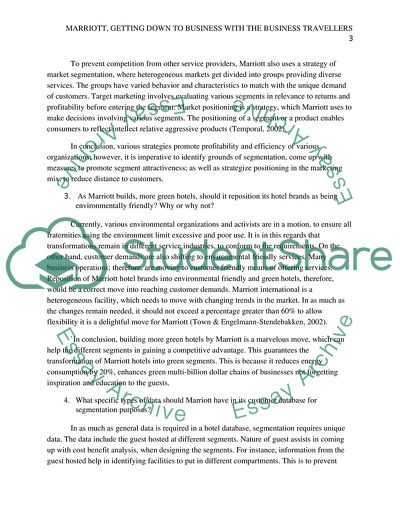Marriott: Getting Down to Business with the Business Travelers Case Study - 1. https://studentshare.org/business/1780761-marriott-getting-down-to-business-with-the-business-travelers
Marriott: Getting Down to Business With the Business Travelers Case Study - 1. https://studentshare.org/business/1780761-marriott-getting-down-to-business-with-the-business-travelers.


